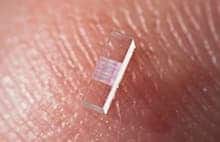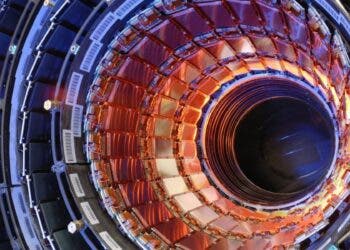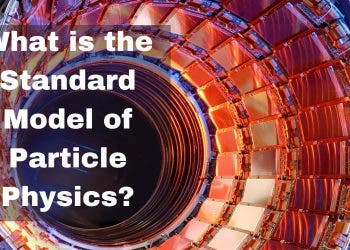
A team of brilliant researchers at the U.S. Department of Energy’s (DOE) SLAC National Accelerator Laboratory and Stanford University have demonstrated a working particle accelerator, used to accelerate particles like electrons or protons to extremely high energies and probe the Universe’s secrets, which is the size of a typical silicon chip. Typically, particle accelerators range from a few kilometers in length to 27 kilometers – the length of the Large Hadron Collider at CERN, the largest particle accelerator in the world.
The researchers liken their work to the pioneering research in electronics from the early ’50s when the transistor replaced huge vacuum tubes and scaled down computers from room-size to tabletop-size. Bring the particle accelerator to the researchers, instead of the researchers having to come to the particle accelerator. As fascinating and useful the idea is, so were the challenges the SLAC team had to overcome.
A tiny particle accelerator
Accelerators today work by using microwaves to boost the energy of electrons, in a two-phase process. In the first part, particles are accelerated near the speed of light. In the second phase, the particles stop gaining velocity, instead the acceleration increases their energy, not the speed – a highly tricky process.

The SLAC and Stanford team went on an alternate route and used high-precision lasers instead of microwaves, which allowed them to scale down their accelerators to the size of a typical chip. In the accelerator-on-a-chip experiment, electrons are accelerated near the speed of light just like in a conventional accelerator. Then comes the novel part: the near light-speed electrons are then focused through a tiny, half-micron channel (millionth of a meter) within a fused silica glass chip just half a millimeter long. The channel is patterned with precisely spaced nanoscale ridges, which when hit by infrared laser light generates electrical fields that interact with the electrons in the channel to boost their energy.
This initial demonstration achieved an acceleration gradient, or amount of energy gained per length, of 300 million electronvolts per meter. That’s roughly 10 times the acceleration provided by the current SLAC linear accelerator. Using such a system, theoretically, you could match the accelerating power of the 2 mile-long SLAC accelerator with just 100 feet, and deliver a million more electron pulses per second. The researchers say the could scale it down even further.
“Our ultimate goal for this structure is 1 billion electronvolts per meter, and we’re already one-third of the way in our first experiment,” said Stanford Professor Robert Byer, the principal investigator for this research.

New generations of smaller, less expensive devices for science, medicine
The demonstration proves that the system may be employed into powerful, yet compact particle accelerator as discussed. However, applications could go well beyond particle physics research. Laser accelerators could drive compact X-ray free-electron lasers, comparable to SLAC’s Linac Coherent Light Source, that are all-purpose tools for a wide range of research.
“It could also help enable compact accelerators and X-ray devices for security scanning, medical therapy and imaging, and research in biology and materials science,” said Joel England, the SLAC physicist who led the experiments.
This doesn’t mean, pocket-sized particle accelerator will start rolling in. Turning the accelerator on a chip into a full-fledged tabletop accelerator will require a more compact way to get the electrons up to speed before they enter the device.
“We still have a number of challenges before this technology becomes practical for real-world use, but eventually it would substantially reduce the size and cost of future high-energy particle colliders for exploring the world of fundamental particles and forces,” said Joel England.
The achievement was reported in the journal Nature. Find out more how the mini-particle accelerator works by watching the video below.






